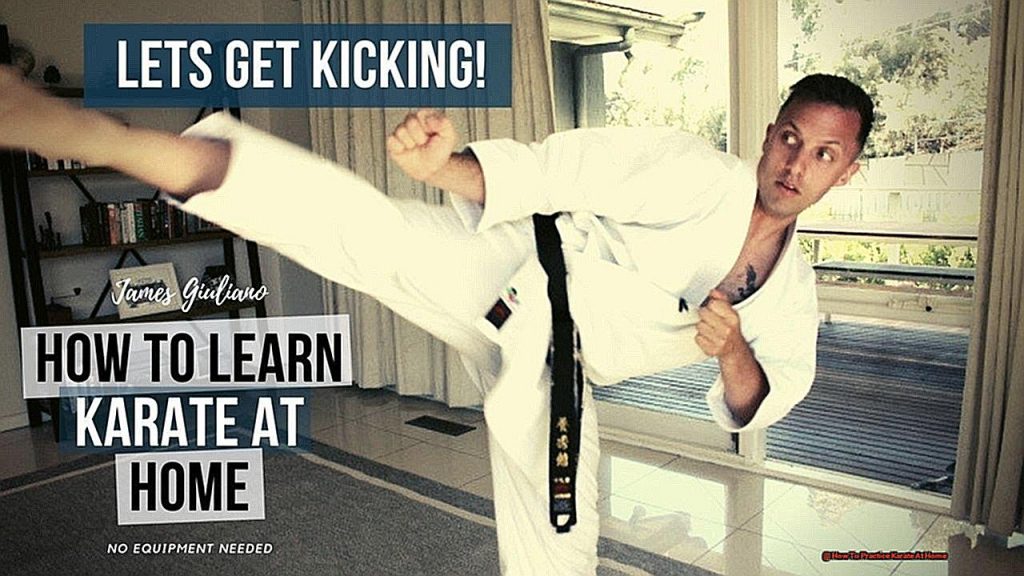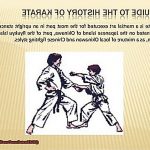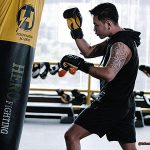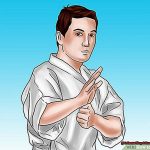Are you tired of the same old workout routine and looking for a new challenge? Want to improve your mental focus while getting in shape? Look no further than practicing karate at home. This ancient martial art has been gaining popularity in recent years, and for good reason. It not only offers an effective form of self-defense but also provides numerous physical and mental benefits.
In this blog post, we will explore the advantages of practicing karate at home and how it can positively impact your life.
Convenience is key when it comes to practicing karate at home. No need to commute to a gym or studio – you can roll out your mat and get started right in the comfort of your own home. Plus, by using items you already have, such as a towel or water bottles, you can save money on expensive gym memberships and equipment.
But convenience isn’t the only perk. Karate is a full-body workout that improves strength, flexibility, balance, and coordination. And let’s not forget about stress relief – the focus required in karate can help reduce stress levels and improve overall mental well-being.
Practicing at home also allows you to set your own schedule and develop self-discipline as you progress through the different levels. You have the freedom to practice whenever works best for you without worrying about class times or schedules.
And here’s a bonus benefit – family bonding. Invite family members to join in on the fun and bond over learning new techniques together. Not only will it bring you closer, but it’s also a great way to stay motivated and hold each other accountable.
Put on your gi, roll out your mat, and unleash your inner warrior with these key benefits of practicing karate at home.
Let’s dive into the world of this empowering martial art from the comfort of our own homes.
How To Practice Karate At Home?
Here are some basic exercises and techniques that you can practice in the comfort of your own home:
Warm-up exercises
Before you begin your karate practice, it’s important to warm up your body with some light stretching and cardio exercises. This helps prevent injuries and prepares your body for the movements involved in karate.
Basic techniques
Focus on mastering basic techniques such as punches, kicks, and blocks. Pay close attention to your form and technique, and use a mirror for self-correction. Start slow and gradually increase speed and intensity as you become more comfortable with the movements.
Kata (forms)
Practice kata at home to improve your balance, coordination, and muscle memory. Without any time constraints, you can fully focus on perfecting each movement.
Sparring
While it may not be possible to spar alone at home, there are still ways to improve your sparring skills. Consider practicing shadow sparring or using a punching bag. You can also safely practice with a partner or a family member.
Mental techniques
Don’t underestimate the power of mental training in karate. Incorporate meditation and visualization into your practice to improve focus, concentration, and overall performance.
Train with equipment
While you may not have access to all the equipment found in a traditional dojo, having some basic items like a punching bag, hand wraps, gloves, and a mirror can greatly enhance your at-home practice.
Attend seminars and camps
Take advantage of opportunities to attend karate seminars and camps to learn from different instructors and gain new perspectives on the art.
Remember, while practicing karate at home can be beneficial, it should not replace training with a qualified instructor. They can provide valuable feedback and corrections to help you improve your technique and progress in your training.
Creating a Safe and Suitable Space for At-Home Practice
Creating a safe and suitable space for at-home practice of karate is crucial to ensure the safety of both the practitioner and their surroundings. By designating a specific area for training, you can have focused and uninterrupted sessions. Here are some essential factors to consider when setting up your at-home training space for karate:
- Location: When selecting the location for your training space, it is important to choose a room with enough space for free movement without any obstructions. Additionally, make sure the area is away from potential hazards such as breakable items or furniture that could cause injury.
- Flooring: The flooring in your training space should be suitable for martial arts activities. Carpeted or padded floors provide cushioning while hardwood or laminate floors allow for easy movement.
- Ventilation: Proper ventilation is essential for fresh air circulation during intense training sessions. Make sure to have windows or artificial ventilation in your training space.
- Lighting: Adequate lighting is crucial for safe karate practice at home. Opt for a well-lit area with natural light or install bright and adjustable artificial lighting.
- Safety Equipment: Keep necessary safety equipment such as mats, pads, and gloves in your training space to protect yourself and your surroundings during practice.
- Storage: To keep the training area organized and safe, it is important to have designated storage space for equipment and supplies.
- Emergency Supplies: In case of any injuries or emergencies, make sure to have first aid kits, water, and emergency contact information easily accessible in your training space.
- Distractions: Minimize distractions in your at-home training space by turning off electronic devices, closing doors, and communicating your training schedule to family members or roommates.
| Factor | Importance | Considerations |
| Location | Crucial | Choose a spacious and obstacle-free area away from potential hazards. |
| Flooring | Important | Opt for carpeted or padded floors for cushioning or hardwood/laminate for easy movement. |
| Ventilation | Essential | Ensure fresh air circulation during intense training through windows or artificial ventilation. |
| Lighting | Crucial | Choose a well-lit area with natural light or install adjustable artificial lighting. |
| Safety Equipment | Important | Mats, pads, and gloves are necessary to protect yourself and your surroundings during practice. |
Essential Equipment for At-Home Karate Practice
Karate is a martial art that requires minimal equipment for at-home practice, but having the right gear can greatly enhance training and ensure safety. The essential equipment for at-home karate practice includes a karate uniform, gloves, shin guards, chest protector, headgear, mouthguard, groin protector, and focus mitts.
Karate Uniform or “Gi”
A karate uniform, also known as a “gi,” is a traditional and necessary piece of equipment for practicing this martial art. It typically consists of a jacket, pants, and belt and should be lightweight and comfortable to allow for fluid movement during training. It is recommended to purchase a gi specifically designed for karate, as gis from other martial arts may differ in weight and design.
Protective Gloves
Gloves are an essential piece of equipment for protecting the hands and wrists during punching and striking exercises. They provide padding for impact and help prevent injuries such as bruising or sprains. Karate gloves are typically fingerless to allow for better grip and movement and can be purchased at martial arts supply stores or online.
Shin Guards
Shin guards are necessary to protect the shins and ankles from strikes and kicks during sparring and training. They provide padding and support to these vulnerable areas to prevent injuries. Shin guards come in various sizes and materials, so it is important to find a pair that fits comfortably and offers adequate protection.
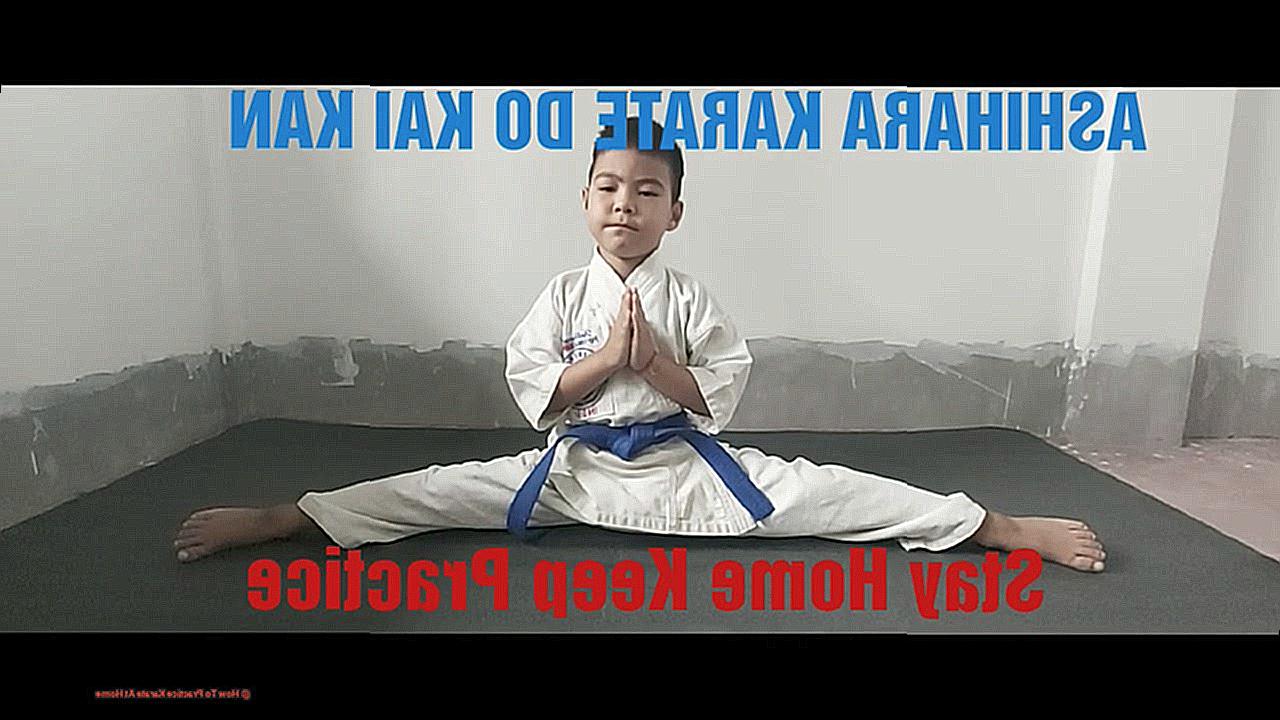
Chest Protector
A chest protector is used to cover and safeguard the upper body, including the ribs, stomach, and shoulders. It is especially useful during sparring sessions as it can absorb impact from strikes or blocks. Chest protectors should fit snugly but not restrict movement.
Headgear
Headgear is essential for protecting the head from impact during sparring or training exercises that involve striking. It also helps prevent injuries such as cuts or bruises on the face and should fit securely and comfortably without obstructing vision.
Mouthguard
A mouthguard is a crucial piece of equipment for protecting the teeth and jaw during sparring or training. It helps absorb impact and prevent injuries such as broken teeth or jaw fractures and can be purchased at most sporting goods stores or online.
Groin Protector
For male practitioners, a groin protector is necessary to safeguard this sensitive area during sparring and training. It provides padding and support to prevent injuries from accidental strikes and comes in various sizes and designs, so it is important to find one that fits comfortably.
Focus Mitts
Focus mitts are used to practice striking and improve accuracy in karate techniques. They come in pairs and are held by a training partner, allowing the practitioner to practice different combinations and techniques. Focus mitts can be purchased at martial arts supply stores or online.
All of these essential pieces of equipment for at-home karate practice can be acquired at martial arts supply stores or online retailers, ensuring a safe and effective training experience.
Warming Up and Focusing on Basic Techniques
To properly prepare your body for a karate training session at home, it is crucial to incorporate a diverse range of basic techniques in your warm-up routine. These techniques should aim to increase body temperature, activate key muscle groups, and enhance mobility and coordination.
- Jogging or Jumping Jacks: Begin your warm-up with light cardio exercises such as jogging in place or doing jumping jacks. This will raise your heart rate and promote blood flow to your muscles.
- Stretching: Include dynamic stretches like leg swings, arm circles, and torso twists to activate and mobilize key muscle groups like the legs, arms, and core.
- Solo Drills: Utilize this time to practice solo drills that imitate movements used in karate, such as front kicks, punches, and blocks. This will not only improve coordination but also enhance muscle memory.
- Partner Drills: If you have a training partner at home, make use of them for partner drills like light sparring or practicing combinations. This will not only elevate your skills but also add a sense of teamwork to your warm-up.
- Speed Drills: Incorporate speed drills like fast punches or kicks to prepare your body for the more intense training ahead.
- Cool Down: Conclude your warm-up with static stretches to lower the risk of injury and improve flexibility.
Below is a table summarizing the basic techniques that should be included in a warm-up for practicing karate at home:
| 1. | Jogging or Jumping Jacks | Raise heart rate and promote blood flow |
| 2. | Stretching | Activate and mobilize key muscle groups |
| 3. | Solo Drills | Improve coordination and enhance muscle memory |
| 4. | Partner Drills | Elevate skills and foster teamwork |
| 5. | Speed Drills | Prepare for intense training with increased speed and reaction time |
| 6. | Cool Down | Lower risk of injury and improve flexibility |
Remember to listen to your body and adjust the intensity of your warm-up based on your individual needs and abilities.
The Importance of Kata in Karate Training
Kata is an essential aspect of karate training that fosters the development of a practitioner’s physical, mental, and spiritual dimensions. As the ultimate objective of karate is to attain perfection in both technique and character, kata plays a pivotal role in achieving this aspiration through consistent and dedicated practice.
Integrating kata into home training can bring significant benefits to practitioners as it offers the opportunity to hone techniques without the need for a partner or instructor. A structured at-home training routine can involve the following steps:
- Warm-up: Commence with a 10-15 minute warm-up session that incorporates cardio exercises, dynamic stretches, and fundamental techniques such as punches, kicks, and blocks. This will elevate your heart rate, loosen your muscles, and prepare your body for the rigorous training ahead.
- Solo kata practice: Select a kata that you are already familiar with and perform it at least 3-5 times with precision and power. Focus on each movement and strive to execute them with utmost accuracy. This not only enhances overall technique but also cultivates muscle memory.
- Partner drills: If you have a training partner or family member at home, you can incorporate partner drills into your routine. This may include practicing kumite (sparring) techniques or self-defense techniques in a controlled manner.
- Speed drills: To boost speed and reaction time, integrate speed drills into your routine. This could involve performing quick combinations of punches and kicks or responding to your partner’s movements.
- Cool down: End your training session with a cool down that comprises static stretches to prevent injury and improve flexibility.
Incorporating kata into your at-home karate training not only enhances technique and physical abilities but also augments mental focus and discipline.
Improving Sparring Skills at Home
There are many ways to enhance your sparring skills through practicing karate at home. The first is by regularly practicing kihon (basic techniques) which helps in building power and control, resulting in more effective strikes during sparring. You can also improve your speed, timing, and distance by practicing kata at home.
Furthermore, training at home allows you to focus solely on your progress and development without any pressure from competition or distractions from other students. This enables you to relax and be fully present in the moment, leading to improved focus and control during sparring.
To further improve your sparring skills, incorporate agility and footwork exercises into your training routine. These exercises enhance speed, agility, and coordination, making you a faster and more agile fighter in the ring.
Aside from physical training, it is equally important to work on your mental game. Shadow sparring at home can help increase speed and movement while also allowing you to visualize different scenarios and strategies for sparring.
Additionally, reaction speed drills with tools like kicking paddles, focus mitts, reaction balls, and mirror drills can sharpen your reflexes and make you a quicker and more responsive fighter. Incorporating sprinting drills into your training routine can also improve overall quickness and reaction time.
Lastly, maintaining overall conditioning through regular at-home workouts not only increases endurance but also helps maintain speed and agility during a sparring match.
Mental Techniques for Enhancing Karate Performance
In addition to physical training, there are also various mental techniques that can be used to enhance karate performance at home. These strategies involve leveraging the power of the mind to improve focus, boost confidence, and enhance overall performance. Some of the most effective mental techniques for improving karate skills at home include mental imagery, visualization, and mindfulness. By incorporating these techniques into regular training routines, karate practitioners can elevate their performance and reach their full potential.
Mental imagery, also known as mental rehearsal, is a powerful technique that involves creating detailed mental images of executing techniques or achieving goals. This method can greatly improve muscle memory and increase confidence in executing techniques with precision and effectiveness. In addition to refining form, posture, and body mechanics, visualizing correct technique can also be a valuable tool for enhancing overall performance.
Another helpful mental technique for improving karate skills is visualizing successful performances. By envisioning themselves executing flawless techniques or winning matches, athletes can significantly boost their confidence and motivation. This technique can also be used to overcome mental blocks or fears by repeatedly practicing challenging techniques mentally.
To make the most out of visualization exercises, it is important to incorporate sensory details into the experience. By engaging other senses such as touch, sound, and smell, practitioners can achieve a deeper level of focus and concentration during visualization sessions.
To effectively integrate mental techniques into training routines, it is crucial to have dedicated visualization sessions in a calm and quiet environment. This can be done through pre-competition rituals or by incorporating it into physical practice. Additionally, guided imagery recordings or apps can serve as valuable tools for visualization.
Consistency is key when it comes to utilizing mental techniques for enhancing karate performance. It is recommended to allocate at least 10-15 minutes daily for visualization exercises in a distraction-free environment.
Conclusion
In conclusion, the benefits of practicing karate at home are numerous and undeniable. Not only is it a convenient and cost-effective option, but it also offers a full-body workout that improves physical strength, flexibility, balance, and coordination. Additionally, by setting your own schedule and including family members in your practice sessions, you can develop self-discipline while strengthening bonds with loved ones.
However, creating a safe and suitable space for at-home practice is crucial. It is important to have essential equipment such as a gi, gloves, shin guards, chest protector, headgear, mouthguard, groin protector, and focus mitts to ensure proper protection during training.
And let’s not forget the importance of incorporating basic techniques into warm-up routines to prepare the body for more intense training sessions.

